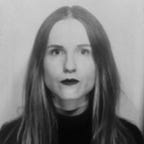Citymapper — a UX solution for your urban travel
As part of the prep work for Ironhack’s UX/UI course, we were asked to download Citymapper, a Silicon Valley company that offers urban mobility. There is one pain point through. Depending on the route that the user takes, they’re often bombarded with many tickets to complete their travels.
Main problems found:
Using the Design Thinking method, my first action point was to create a questionnaire that would help define the main problems found in the app, focusing on the user’s viewpoint.
I downloaded the application and experimented with the user flow a bit. I brainstormed a few ideas of what would work after reading the results of my questionnaire.
The main problem that I’m trying to solve:
Offering a single ticket solution in the Citymapper application for all modes of transport through the use of a QR code. The app will integrate all tickets necessary for a user’s trip through shopping cart integration — customised to the user’s unique needs.
The app will also showcase alerts for the trip by notifying users of delays and giving live updates of the directions.
How am I going to solve this problem?
My approach:
Empathize
To come up with actionable ideas, I conducted some research on how people use travelling/mobility apps in their city. A strong result of the questionnaire showcased that people heavily rely on Google Maps to get around.
I spoke to 5 people who live in different cities around the world to see how they use mobility apps. It was important that I empathize with them
1.) Define
Once the questionnaire was done, we noticed that through the Citymappers, the main user pain point was trying to get different tickets from different modes of transport into one integrated user experience. Users had trouble purchasing several tickets for longer journeys due to the different apps that needed to be used to do so.
Other issues that arose were that users usually relied on Google maps to get live notifications of their journeys, and it was hard to break away from such a habit.
2.) Ideate
Through sketching, I managed to brainstorm a few ideas and colour-coded them to showcase the importance of the following features that should be developed for the application. For the purchase tickets, and through the integration of live alerts and trip notifications, I thought it would be a good idea to improve the map quality of the different routes that are on offer. The routes were weighted by cheapest, fastest and overcrowding of trains.
3.) Solution + Prototyping
The solution for the app was to integrate services represented through a QR code that would bring all the tickets for each route together in a single space. The primary user need was to ensure that mobility providers, apps and websites integrated into Citymapper clearly and efficiently — while keeping users up-to-date with any changes that might happen during their transportation.
Key learnings:
- Taking time to listen and empathize with the interviewees/users — this gives way to creating a more user-friendly update/solution to an app’s issues.
- While some solutions are better than others, it’s essential to understand the phased approach in which an app can be developed further.
- While wireframing, I understood the user journey and service design in more detail for the application — offering a better outcome for users to have a single QR code for all of their tickets, with options to choose between their modes of transport, how quickly they arrive to their destination and how overcrowded a mode of transport can be (showcased through live updates).
